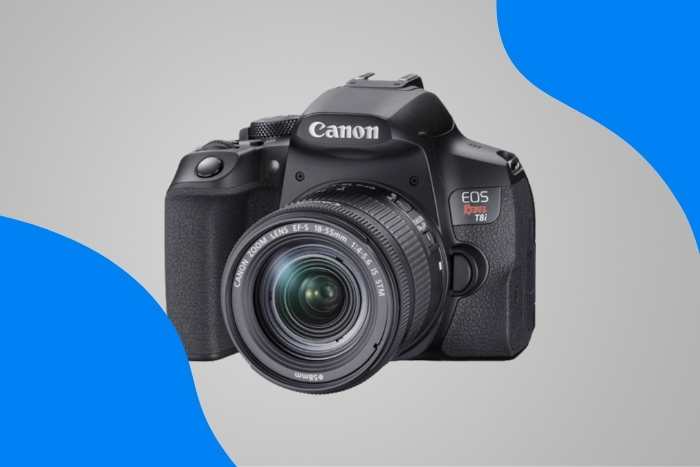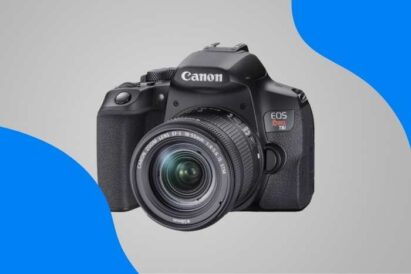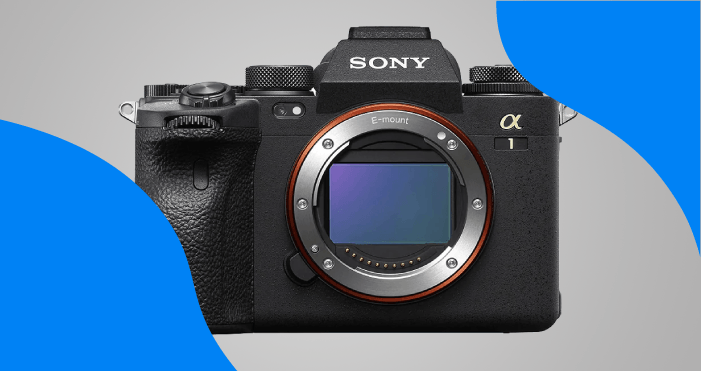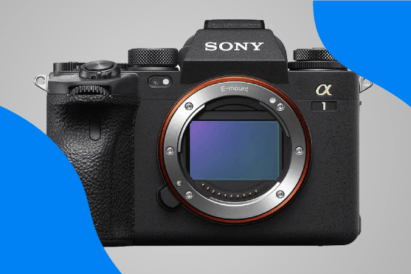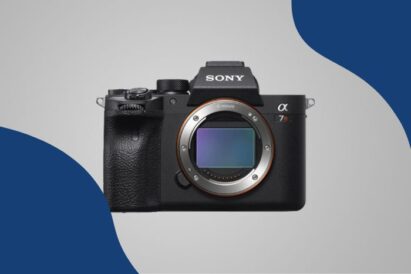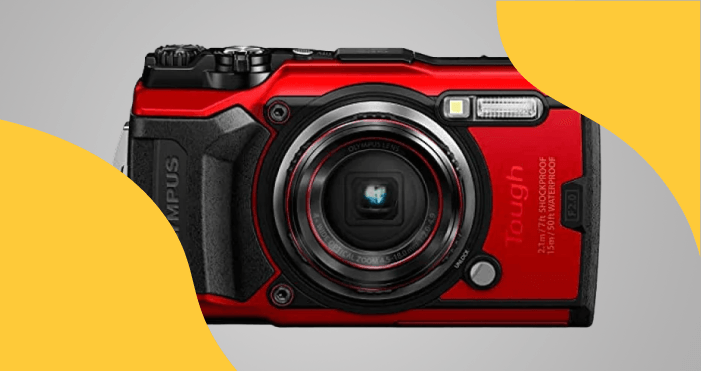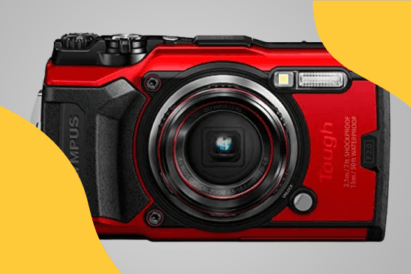Many photographers just shoot stills. Many videographers just shoot videos. But there are plenty who want to do both. If you’re one of them, here’s a guide to the best hybrid cameras.
It’s no coincidence that they’re all mirrorless cameras. That’s not because “hybrid” means “mirrorless.” (Some people use it that way.) But it’s because the best mirrorless cameras offer everything you want. It’s a still camera with all the video features you need.
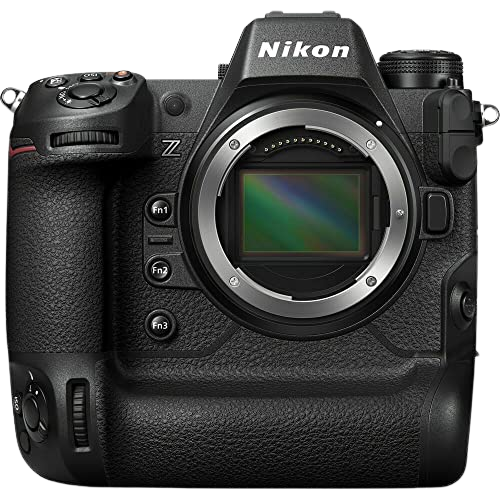
Nikon Z9
Yes, some excellent still cameras do offer video. Some examples are the Nikon D850, Nikon D6, and the Canon EOS 1 DX Mark III. But DSLRs are usually bigger and heavier. They’ll always suffer from viewfinder blackout. And their autofocus systems will also never work across the whole frame.
If you want a hybrid camera that doesn’t compromise on stills or video, you’re better off with a Nikon Z9. Or there are plenty of crop sensor models from Panasonic, Fujifilm, and Olympus. These offer a smaller, more portable option at a fraction of the price.
What is the Best Hybrid Camera?
Let’s look at a quick roundup of the best hybrid camera options before we go into each camera in more detail.

- Ultra-fast image processor
- High, 120 fps compressed frame rate
- No visible rolling shutter
- Excellent battery life
- 8K/60p Ultra HD video
- Unlimited low-resolution recording
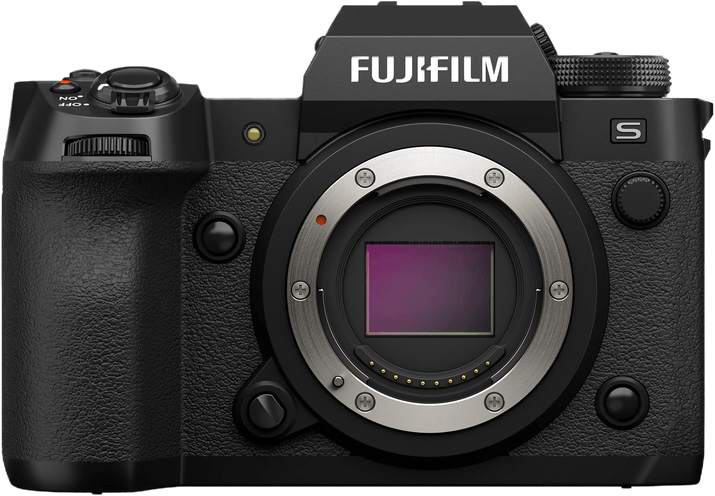
- Great image quality
- High frame rate
- In-body image stabilization (IBIS)
- Five subject detection modes
- Excellent for video
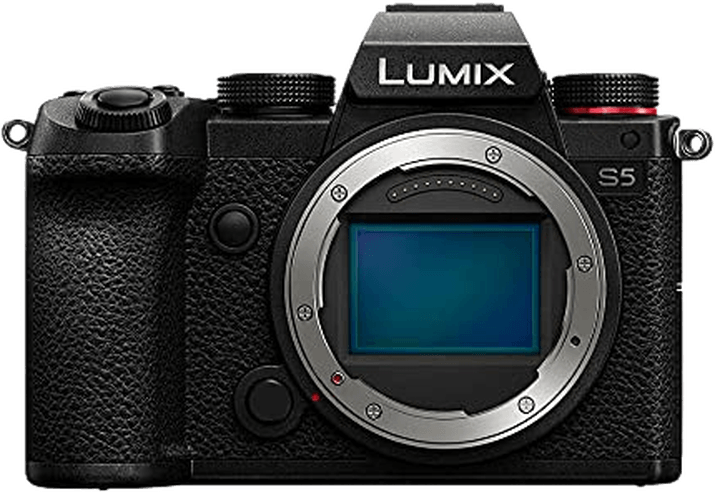
- Lightweight and portable
- Image stabilization to prevent camera shake
- Dual memory card slots
- Great 4K video capabilities
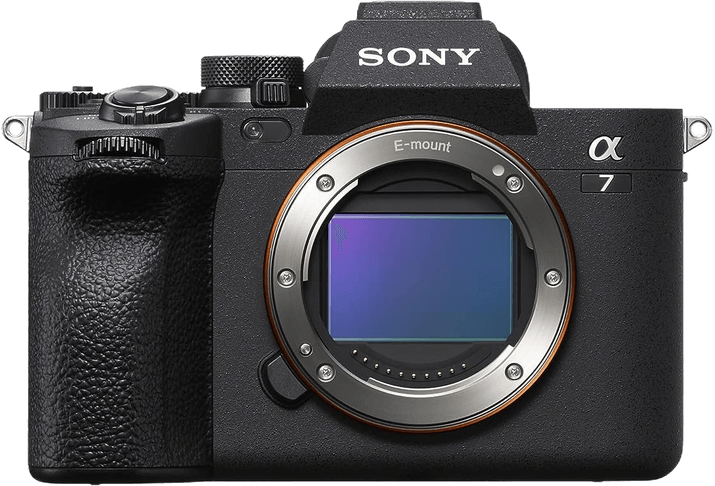
- Excellent image quality
- Super responsive autofocus
- 5.5 stops of image stabilization
- Fully articulating rear screen
- Powerful video capabilities (4K / 60p, 10-bit video) and live streaming

- Good resolution and dynamic range
- Excellent subject tracking
- A great frame rate and deep buffer
- Pleasing JPEG colors
- Up to 7.5 stops of in-body image stablization with supported lenses
- Weather-sealed body

- 30 fps burst mode with electronic shutter
- 5-axis sensor-shift image stabilization
- Fully articulating touch screen
- Unlimited, oversampled 4K video
- Animal eye-detect AF for wildlife and pets
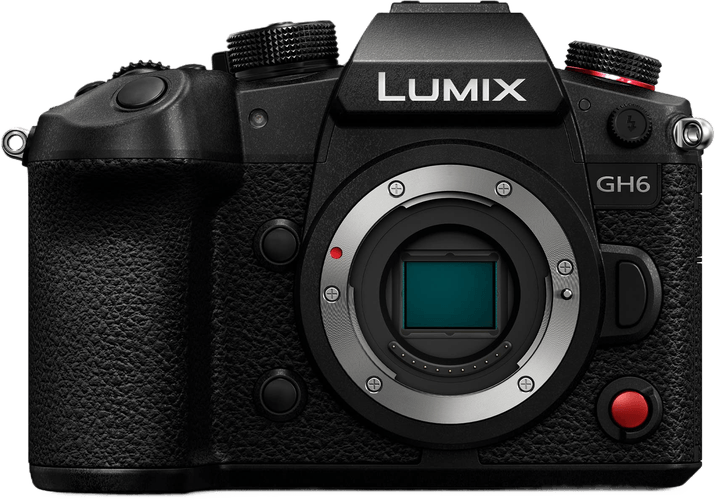
- 5.8K max video resolution
- Unlimited recording time as built-in fan prevents overheating
- Sensor-shift image stabilization
- Dual memory-card slots
- Weather-sealed body
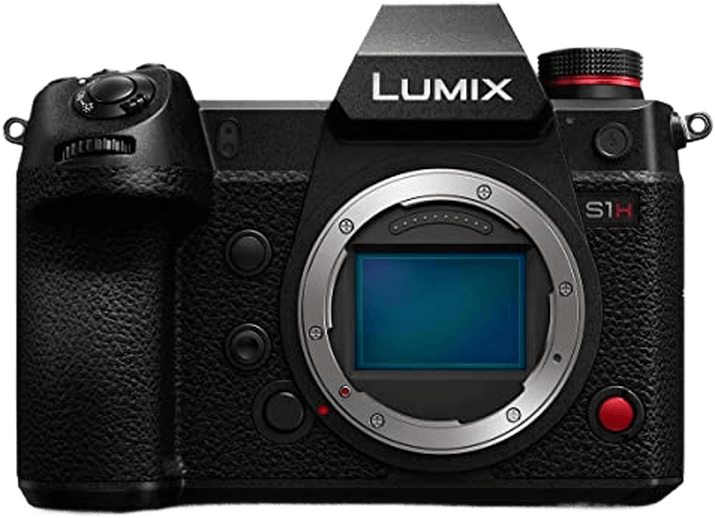
- Great optics for low-light situations
- Dual in-body image stabilization of up to 6.5 stops
- Excellent-quality 6K video
- Fantastic tools for recording video
- Cooling vent allows longer filming time
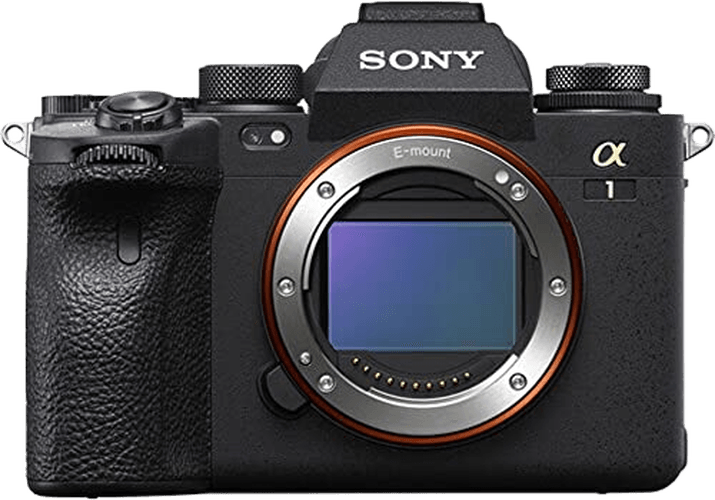
- Large sensor captures tons of detail
- High frame rate of 30 fps
- Eye tracking (human, animal, and bird)
- Easy customization
- Silent shooting for quiet situations
- Incredible 8K/30p Ultra HD video
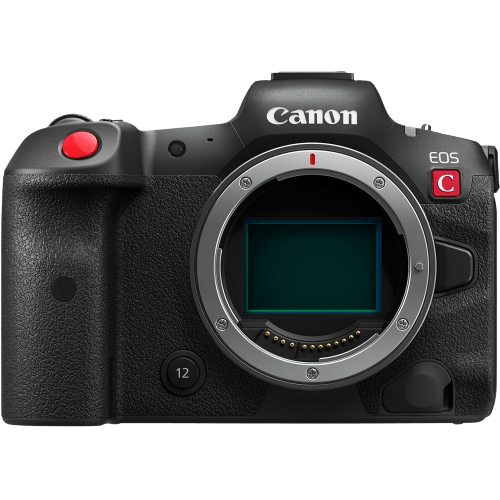
- The photo/video switch allows you to easily switch between shooting modes
- 5-axis In-camera image stabilization
- Compact and lightweight
- Unlimited video recording due to built-in fan preventing overheating
- Reduced video sizes with Cinema RAW Light modes
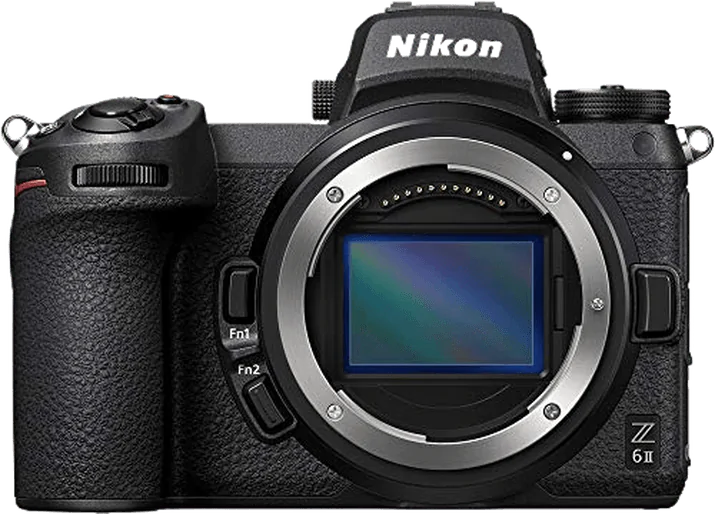
- Excellent low-light focusing
- Lightweight and portable
- Superb low-light dynamic range
- Dual memory card slots
11 Best Hybrid Cameras in Detail
Now let’s look at each hybrid camera in detail. Some lean more toward still photography. Others are built more for video. But you get the best of both!
1. Nikon Z9

| Camera Type |
Camera Type
|
| Megapixels |
Megapixels
46 MP |
| Sensor Format |
Sensor Format
|
| Sensor Size |
Sensor Size
23.9 x 35.9 mm
|
| Frame Rate |
Frame Rate
30 fps |
| Autofocus Points |
Autofocus Points
493 |
- Ultra-fast image processor
- High, 120 fps compressed frame rate
- No visible rolling shutter
- Excellent battery life
- 8K/60p Ultra HD video
- Unlimited low-resolution recording
- Only 11 MP files at the highest frame
- You can only shoot RAW files at 20 fps
- Tracking can fail with erratic movement
- IBIS not as good as Canon R3
- Autofocus isn't as good for video
- The screen doesn't fully articulate
The Nikon Z9 is the company’s flagship mirrorless camera. It’s ideal for press, sports, wedding, and wildlife photography. Despite its large sensor, it can shoot at extremely high frame rates in JPEG and RAW. This is due to three features:
- A full-time electronic shutter
- A lightning-fast readout speed
- Support for CFexpress Type B cards
The RAW frame rate is not as fast as on the Sony a1. But you do get a one-second pre-buffering option.
The Z9’s the first mirrorless camera to offer Nikon’s excellent 3D Tracking AF. The autofocus system also offers AI-based subject recognition. It recognizes people, animals, and vehicles. In Auto mode, it detects the type of subject automatically. All in all, the autofocus system is powerful and easy to use.
The dual grip and pull-out touch screen make it easy to shoot in landscape or portrait mode. But the grip makes the camera quite large and heavy. (Not compared to the D6, but certainly to the D850.) That’s not great if you’re a travel photographer!
Nikon Z9 Video Specs
It’s also great for video and getting better. You can shoot for more than two hours in even the most demanding modes. The 4K video is oversampled. That means it’s a full-resolution video. But you can convert it to the required resolution. So it beats the equivalent footage from the Sony a1, which isn’t oversampled.
Recent firmware updates have added 4K 60p from 8K. Plus, there is 8.3K 24p internal N-RAW recording. (RED has taken Nikon to court, alleging that N-RAW infringes on one of their patents! But Nikon is fighting back.)
2. Fujifilm X-H2S

| Camera Type |
Camera Type
|
| Megapixels |
Megapixels
26 MP |
| Sensor Format |
Sensor Format
|
| Sensor Size |
Sensor Size
23.5 x 15.6 mm
|
| Frame Rate |
Frame Rate
40 fps |
| Autofocus Points |
Autofocus Points
425 |
- Great image quality
- High frame rate
- In-body image stabilization (IBIS)
- Five subject detection modes
- Excellent for video
- Limited lens line-up
- Canon, Sony have better Eye Detection
- No touch screen video tracking
- Rolling shutter in F-Log2 video
- Dynamic range is lost shooting video with an electronic shutter
The new X-H2S is Fujifilm’s flagship crop-sensor mirrorless camera. It’s suitable for sports, action, and wildlife photography. It has a fully articulated display. It shoots 40 fps in electronic shutter mode. (This is with AF locked shooting lossless compressed RAW).
The size of the buffer depends on the card you use. If you use an SD UHS-II card, you get a 150-shot buffer before a dramatic slowdown. A CFexpress card gives you 180 shots at full speed and another 100 shots at 20 fps. That’s still fast, and the transition isn’t noticeable.
The Fujifilm X-H2S offers fantastic image quality, as with other APS-C models like the X-T4. It also has solid Eye Detect AF-C and five subject detection modes:
- Animal
- Bird
- Motorcycle and bike
- Airplane
- Train
The burst rate is also extremely high. You have to use release priority rather than focus priority at 40 fps. But many shots are out of focus. You’ll get a near-perfect hit rate up to 20 fps. But you get fewer shots in focus at 40 fps! Overall, Sony and Canon eye detection works slightly better with fast-moving subjects.
The in-body image stabilization (IBIS) system is improved. And there’s a rock-solid image stabilization Boost mode for static subjects. But the system sometimes “fights” you when you’re panning.
The only major issue letting down the Fujifilm X-H2S is the lens line-up. The new lenses with linear motors are great for autofocus but poor for manual. There also aren’t very many fast lenses currently available.
Fujifilm X-H2S Video Specs
The video performance on the Fujifilm X-H2S is excellent. The stacked sensor gives better slow motion recording and less rolling shutter. You lose a third to half a stop of dynamic range shooting video with the electronic shutter. But you can get it back by using F-Log2. (You can watch a YouTube video of F-Log2.) It improves the dynamic range of your video.
The 14-bit output means a real benefit in image quality and dynamic range. Graded F-Log2 footage using the Eterna profile looks lovely. But you pay the slight penalty of rolling shutter in F-Log2 because of the slower readout speed.
You can also record 6.2K ProRes RAW with a Ninja 5 V+ external recorder. Shooting in RAW gives you full control over all settings. This includes white balance and noise reduction.
You can’t start video tracking by tapping on the touch screen. It’ll only track a subject from the subject detection menu or when Eye Detect is engaged. If you want to track something else, you have to keep the focus point over that area the whole time.
3. Panasonic Lumix DC-S5

| Camera Type |
Camera Type
|
| Megapixels |
Megapixels
24.2 MP |
| Sensor Format |
Sensor Format
|
| Sensor Size |
Sensor Size
23.8 x 35.6 mm
|
| Frame Rate |
Frame Rate
7 fps |
| Autofocus Points |
Autofocus Points
225 |
- Lightweight and portable
- Image stabilization to prevent camera shake
- Dual memory card slots
- Great 4K video capabilities
- Slow-burst shooting
- Short battery life
- Poor autofocus within camera class
- Limited L-mount lens range
The Panasonic Lumix S5 is an affordable mirrorless full frame digital camera. Dropping the AA filter means it offers good image quality and 4K video footage. It has the same sensor as the DC-S1. But it’s in a smaller body and at a lower price. You also get dust- and splash-resistance, Wi-Fi, and Bluetooth.
It has IBIS for camera shake. And it has an updated contrast-detect DFD autofocus system. This offers improved face, body, and head detection and decent subject tracking.
There are also new creative modes. This includes a 96 MP multi-shot high-resolution with good motion correction.
But the burst rate is low for action shots and drops again if you need continuous autofocus. Battery life is not great, and the card slots only accept SD UHS-I and UHS-II cards.
Panasonic Lumix S5 Video Specs
The S5 offers Full HD, full frame 4K video up to 30p. And it has 60p with an APS-C crop. It’s better than the DC-S1 for video due to the fully articulating screen and smaller body.
Plus, there are a wide variety of video features borrowed from the S1H:
- An anamorphic lens option that lets you shoot in a widescreen format
- Oversampling
- Waveforms (like a histogram to help with exposure)
- Zebra stripes that highlight overexposed areas
- Quality 10-bit 4:2:2 internal recording for more detail and editing possibilities
But there’s a 30-minute recording limit with some formats. And the autofocus tends to wobble.
4. Sony a7 IV

| Camera Type |
Camera Type
|
| Megapixels |
Megapixels
33 MP |
| Sensor Format |
Sensor Format
|
| Sensor Size |
Sensor Size
23.8 x 35.6 mm
|
| Frame Rate |
Frame Rate
10 fps |
| Autofocus Points |
Autofocus Points
759 |
- Excellent image quality
- Super responsive autofocus
- 5.5 stops of image stabilization
- Fully articulating rear screen
- Powerful video capabilities (4K / 60p, 10-bit video) and live streaming
- More expensive than the Sony a7 III
- 6 fps with 14-bit lossless compressed or uncompressed RAW files
- Significant distortion with moving subjects using a silent shutter
- Occasional issues with rolling shutter
- Requires a fast memory card
The Sony a7 IV is a 33+ MP full frame mirrorless camera. It has a decent burst rate, a deep buffer, and several customization options. You can also shoot 4K video. And as with any Sony camera, you get a huge variety of compatible lenses to choose from.
Unfortunately, the readout speed of the sensor is low. This leads to rolling shutter. Plus, you can only use the top burst rate in the lossy compressed format. And that reduces dynamic range.
The autofocus system is powerful, simple, and reliable. It integrates eye, face, and body tracking. That means it can seamlessly switch between them. For stills or videos, you can follow people, birds, dogs, and cats.
It can even cope with subjects it hasn’t been trained to recognize. It does this by using pattern detection, subject color, and brightness. Eye detection is slightly weak. But that’s only a slight quibble.
Sony a7 IV Video Specs
Video capture options have increased since the a7 III. The a7 IV now offers 10-bit video with several codec options and great video autofocus. But you get pretty bad rolling shutter when using the full width of the sensor for 4K 24p.
The 4K 60p is better. But it’s cropped to Super 35. And the camera does have a few features the a1 and a7S III don’t have. It has breathing compensation (for some Sony lenses) and focusing aids.
5. Olympus OM-D E-M1X

| Camera Type |
Camera Type
|
| Megapixels |
Megapixels
20 MP |
| Sensor Format |
Sensor Format
|
| Sensor Size |
Sensor Size
13 x 17.4 mm
|
| Frame Rate |
Frame Rate
60 fps |
| Autofocus Points |
Autofocus Points
121 |
- Good resolution and dynamic range
- Excellent subject tracking
- A great frame rate and deep buffer
- Pleasing JPEG colors
- Up to 7.5 stops of in-body image stablization with supported lenses
- Weather-sealed body
- Expensive
- Sensor doesn't match up to many close competitors
- Electronic shutter might lead to rolling shutter effects and banding
- Large, heavy, hard to handle body
- Motion artifacts with Cinema 4K at 24p
The Olympus OM-D E-M1X is a Micro Four Thirds mirrorless camera featuring a dual grip. It’s the biggest and most expensive hybrid on the market. But it’s still great for sports, wildlife, and action photography.
It has a smaller sensor and lacks high-speed CFexpress card support. But it’s a feature-packed model:
- A good autofocus system
- A high burst rate
- Minimal rolling shutter
- Handy USB charging and a long battery life
The AI-based 121-point autofocus system offers sticky tracking and subject recognition. You also get several cool camera features. These include a hand-held high-res shot mode. And a Pro Capture mode records images before you even press the shutter!
You get up to 7.5 EV of in-body image stabilization (IS), and Live ND multi-shot mode simulates ND filters. These let you slow down your shutter speed.
The ergonomics and handling are also good. It has dual AF joysticks, a vari-angle touch screen, and an almost blackout-free EVF with a refresh rate of 120 Hz.
Olympus OM-D E-M1X Video Specs
You can also shoot 4K videos in various formats, including 24p. But you get some motion artifacts as the camera never hits its highest bit rate. The video AF tracking is excellent. And the sensor and digital IS is smooth as silk—although it comes with a 1.19x crop.
One niggle is that the headphone and microphone cable gets in the way of the LCD when it’s flipped out. And the OM-Log400 profile is only 8-bit, not 10-bit. That means you get less dynamic range and less flexibility when post-processing.
6. Canon EOS R7

| Camera Type |
Camera Type
|
| Megapixels |
Megapixels
33 MP |
| Sensor Format |
Sensor Format
|
| Sensor Size |
Sensor Size
22.2 x 14.8 mm
|
| Frame Rate |
Frame Rate
15 fps |
| Autofocus Points |
Autofocus Points
651 |
- 30 fps burst mode with electronic shutter
- 5-axis sensor-shift image stabilization
- Fully articulating touch screen
- Unlimited, oversampled 4K video
- Animal eye-detect AF for wildlife and pets
- Fiddly AF joystick and exposure compensation dial
- Easy to change power switch to video by accident
- No built-in flash
- Limited range of native lenses
- Rolling shutter effect shooting video
The Canon EOS R7 is an APS-C mirrorless camera. It offers fast continuous shooting and good image quality (especially with JPEGs). It also has the following:
- Weather sealing
- A fully articulated touch screen
- Excellent 4K 60p video
The autofocus system works well. But you have to choose People, Animal, Vehicles, or None. Spot Detection is a nice add-on. This lets you focus on a particular part of a moving subject, such as the driver’s helmet in a car or go-kart.
It’s like the AF system in the R3. But without the speed to go with it. That does lead to problems. But there are menu options to ignore foreground subjects, for instance. That should help you get better results.
The grip is comfortable, and the flip-out LCD touch screen is clear and bright. There’s also a handy manual and autofocus (MF/AF) selector switch and button. It looks suspiciously like the one on Nikon DSLRs!
But the autofocus joystick is in the middle of the exposure compensation dial. And it just doesn’t work. The same could be said for the mode dial, which doesn’t have a lock button.
Plus, the On/Off selector includes video mode. That inevitably causes problems if you accidentally put it in the wrong position. And the electronic viewfinder doesn’t offer very high resolution.
Canon EOS R7 Video Specs
Video quality is generally good, and the camera doesn’t overheat if you only shoot for a couple of hours. You get 4K oversampled video up to 30p. But rolling shutter is noticeable if you’re panning or using a telephoto lens.
You can switch to subsampled 4K at 60p or any 1080 formats. But then you get less detailed, noisier footage.
For vlogging, the R7 has about everything you need. That includes image stabilization, eye detection, and headphone and microphone ports. But few native wide-angle lenses are available. And that’s a problem because of the 1.6x crop.
If you use EF lenses, you have to use an adaptor. And you won’t get the best out of the autofocus system.
The Canon EOS R10 was released around the same time as the Canon EOS R7. You can check out the full specs comparison if you are interested.
7. Panasonic Lumix DC-GH6

| Camera Type |
Camera Type
|
| Megapixels |
Megapixels
25 MP |
| Sensor Format |
Sensor Format
|
| Sensor Size |
Sensor Size
17.3 x 13 mm
|
| Frame Rate |
Frame Rate
14 fps |
| Autofocus Points |
Autofocus Points
315 |
- 5.8K max video resolution
- Unlimited recording time as built-in fan prevents overheating
- Sensor-shift image stabilization
- Dual memory-card slots
- Weather-sealed body
- Fairly expensive camera
- AF system lags behind other brands
- Mediocre low-light performance
- Large and heavy body isn't always comfortable to handle
- Battery life could be better
The Panasonic Lumix DC-GH6 is another Micro Four Thirds camera. It has an all-new sensor and image processor, and it’s aimed at videographers.
Its design and form are great. And the image quality is good. But the photos do lack dynamic range at low ISOs.
Subject tracking works well. That’s especially true with compatible Panasonic lenses with Depth from Defocus (DFD). But the continuous autofocus burst rates are too slow for wildlife or sports.
Video
The GH6 offers a huge range of 4K video formats. This includes slow-motion capture at 120 fps. And there’s an option of full-sensor “open gate” or anamorphic shooting. These provide a sharper or wide-angle recording. You also get standard industry formats such as Apple’s ProRes 422 and 422HQ.
The sensor has parallel high- and low-gain readouts. These give a Dynamic Range Boost mode for low light. They give more than 13 stops of dynamic range at higher ISOs above 800.
But it’s awkward to switch it on and off. And low-ISO footage without the boost mode is not as good as on the DC-GH5.
It’s the first GH digital camera to use the full VariCam V-Log profile. This improves low-light performance. There’s also a four-channel audio option. And it has a hand-held high-res mode with motion correction.
You get features like ProRes recording, waveforms, vectorscopes, and shutter angles. Finally, there’s a built-in fan that you’d normally only expect from a proper cinema camera. This prevents overheating when shooting video.
Future firmware releases are due. They will provide a few other quality shooting and upload options:
- Direct recording to SSD over USB
- 4K 120p over HDMI with Live View
- 4K 120p RAW stream over HDMI (High Definition Media Interface)
- An updated version 2.1 HDMI
8. Panasonic Lumix DC-S1H

| Camera Type |
Camera Type
|
| Megapixels |
Megapixels
24 MP |
| Sensor Format |
Sensor Format
|
| Sensor Size |
Sensor Size
35.6 x 23.8 mm
|
| Frame Rate |
Frame Rate
9 fps |
| Autofocus Points |
Autofocus Points
225 |
- Great optics for low-light situations
- Dual in-body image stabilization of up to 6.5 stops
- Excellent-quality 6K video
- Fantastic tools for recording video
- Cooling vent allows longer filming time
- No RAW video capture
- Low burst frame rate of 9 fps
- Heavier than similar Lumix models
- Battery life varies due to camera's fan
- Not the most reliable autofocus when recording video
The Lumix DC-S1H is a full frame mirrorless camera. Panasonic designed it for videographers. It offers many custom options, 6K recording, and a range of video features like the DMC GH6.
The S1H also works as a still camera. The full frame sensor helps with sharpness and detail. But the rather aggressive AA filter softens the images compared to those taken with a DC-S1 or S5.
Lumix DC-S1H Video Specs
It’s when shooting video that the camera comes into its own. It offers stellar full frame 6K video with unlimited recording. You also get HDR preview modes, variable frame rate, and high frame rate video. For serious filmmakers, it has several advanced features to improve videos:
- Anamorphic de-squeeze
- H.264 and H.265 internal recording
- LUT-based display View Assist mode
- Video scopes for color correction and aligning hue and saturation levels
- V-Log gamma
- Waveforms
Finally, there’s a high-res EVF, a vari-angle touch screen, and in-body image stabilization. This has support for Panasonic Dual-IS 2 (see YouTube video). The only video problems? Autofocus, variable battery life, and rolling shutter in full frame formats.
9. Sony a1

| Camera Type |
Camera Type
|
| Megapixels |
Megapixels
50.1 MP |
| Sensor Format |
Sensor Format
|
| Sensor Size |
Sensor Size
24 x 35.9 mm
|
| Frame Rate |
Frame Rate
30 fps |
| Autofocus Points |
Autofocus Points
759 |
- Large sensor captures tons of detail
- High frame rate of 30 fps
- Eye tracking (human, animal, and bird)
- Easy customization
- Silent shooting for quiet situations
- Incredible 8K/30p Ultra HD video
- Expensive
- Highest frame rates only for JPEG, HEIF, and lossy compressed RAW files
- Eye tracking only selected manually
- Small rear LCD screen
- No GPS
The Sony a1 is the company’s flagship full frame mirrorless model. The “one camera to rule them all”! It’s built for speed. And the sensor, processor, and CFexpress cards make it a true thoroughbred.
I have a couple of Sony a1s. And it’s a little embarrassing that I’m only mentioning them now! But what’s great for a wildlife photographer is not ideal for “run-and-gun” videos. And it’s frighteningly expensive!
But it has a great combination of sensor size, frame rate, eye detection, and tracking. And it all comes in a compact, lightweight, and customizable body. For me, that makes it the best camera on the market for still photography.
Sony a1 Video Specs
If you want to take as much video footage as you do still images, the picture changes a little. It starts with the rear touch screen. It only tilts, rather than being a fully articulated screen, which isn’t good for vloggers.
The a1 does offer 8K video. But nobody has a monitor with enough pixels to show that level of resolution. You can switch to full-width 4K. But the problem there is that there’s no oversampling. That means the footage is not as sharp as you get with the Nikon Z9. We have a Sony a1 vs Nikon Z9 specs comparison if you want to check that out for yourself.
It also has a slight usability problem. I once shot footage of a female leopard yawning. But then I couldn’t find it when I uploaded all the files to my laptop. It turns out that the a1 stores videos in a separate folder! By the time I realized, I’d already formatted the memory card!
10. Canon EOS R5 C

| Camera Type |
Camera Type
|
| Megapixels |
Megapixels
45 MP |
| Sensor Format |
Sensor Format
|
| Sensor Size |
Sensor Size
24 x 36 mm
|
| Frame Rate |
Frame Rate
20 fps |
| Autofocus Points |
Autofocus Points
1,053 |
- The photo/video switch allows you to easily switch between shooting modes
- 5-axis In-camera image stabilization
- Compact and lightweight
- Unlimited video recording due to built-in fan preventing overheating
- Reduced video sizes with Cinema RAW Light modes
- Expensive
- Limited native lens compatibility
- Continuous AF only covers 80% of the image sensor in video mode
- Bigger than the original EOS R5
- Must use an external battery source for the fastest shooting speeds
The Canon EOS R5 C is a full frame mirrorless camera. It picks up the baton from the company’s 5D-series of DSLRs. It’s the nearest competitor to the Nikon Z9 and the Sony a1. They are similar regarding sensor resolution, burst rate, autofocus, and video performance. It also solves the overheating problems with the original EOS R5 model.
The R3 may have more features. It has Eye Control AF. But the R5 C is 20% cheaper and has a larger sensor. That means you get 8K video and more resolution in your images. But full-time noise reduction is applied to RAW files.
Canon’s Dual Pixel AF system is excellent. The focus points cover 100% of the frame. And you get body, face, eye, and animal tracking based on artificial intelligence. Your basic choice is between various sizes of focus area or a combined face and tracking mode.
You can also tell the camera to prioritize people or animals. But “no priority” works pretty well, too.
Finally, several “cases” describe subjects’ range and type of movement. These begin with Case 1 for static or slow-moving subjects. And it ends with Case 4 for fast-moving, erratic subjects.
The burst rate is also high—although not quite as high as on the Z9 or a1. The readout speed of the sensor is fast. It eliminates rolling shutter in most instances. The only problem with shooting at 20 fps is that the camera drops to 12-bit mode. That limits the dynamic range in the shots.
Canon EOS R5 C Video Specs
The video quality is great. It’s helped by a high-res viewfinder and a fully articulated touch screen. In Canon’s Cinema RAW Light format, you can shoot 8K up to 60p. This is with 10-bit 422 options in the XF-AVC format.
Canon solved the R5’s overheating problems with an active cooling system. It’s on the camera’s rear. This means video recording is now unlimited. You don’t get in-body image stabilization as you do on the original R5. But you do get waveform and vectorscope displays.
11. Nikon Z6 II

| Camera Type |
Camera Type
|
| Megapixels |
Megapixels
24.5 MP |
| Sensor Format |
Sensor Format
|
| Sensor Size |
Sensor Size
35.9 x 23.9 mm
|
| Frame Rate |
Frame Rate
14 fps |
| Autofocus Points |
Autofocus Points
273 |
- Excellent low-light focusing
- Lightweight and portable
- Superb low-light dynamic range
- Dual memory card slots
- Autofocus can be slow
- Relatively short battery life
- Lower MP count than main competitors
- Needs more customizable buttons
The Nikon Z6 II updates the Z6 full frame mirrorless camera (see our Nikon Z6 II vs Z6 Comparison for full specs). But it has an extra Expeed 6 processor to improve autofocus performance. It has a smaller sensor than the Z9, with a lower frame rate and no integrated grip. This makes it much smaller and more portable.
The autofocus system is an improvement on the original Z6. It adds face and eye detection to the wide-area AF mode. It’s accessible from the “I” quick menu. This means you can narrow the area where the camera looks for faces and eyes.
Before, these features were only available in Auto-area AF. This meant the camera had to choose where to focus.
Autofocus works down to -4.5 EV. That’s the same as the light under a half-moon. You can also gain another two stops by choosing the low-light AF mode. But this means the autofocus acquisition times will be longer.
The burst rate is pretty impressive… against anything other than a modern mirrorless camera. But you can only get the highest figure if you use AF-S (single-area focus) and shoot either 12-bit RAW files or JPEGs. Otherwise, you lose 2 fps.
Nikon Z6 II Video Specs
The video feature set of the original Z6 was pretty good. And the Z6 II builds on that. After a firmware update, you get 4K Ultra HD 60p video recording. Plus, you get support for RAW video output to a Blackmagic external recorder.
The autofocus also works well. And you can choose which settings to carry across. These transfer from stills to video and vice versa, such as white balance.
But unlike the Panasonic Lumix S5, the Z6 II can’t record 10-bit footage internally. And it needs an external recorder for Log, HDR, or RAW format capture.
Our Verdict
The best hybrid cameras on the market are now the same as the best mirrorless ones. At the top of the tree are the full frame mirrorless cameras from Sony, Canon, and Nikon. But the best all-rounder for photography and videography on our list is the Nikon Z9.

Nikon Z9
Are you looking for a smaller, more affordable crop-sensor model? Look at the new Fujifilm X-H2S, Panasonic Lumix DC-S5, and Olympus OM-D E-M1X. They offer good image quality. Plus, they have excellent burst rates, buffer sizes, and video features.
If you’re looking for more inspiration try our recent guides to the best camera for product photography, 4K DSLRs, or Nikon mirrorless cameras next!


